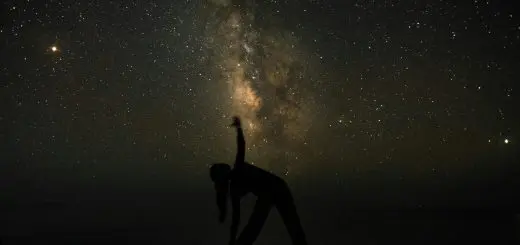Understanding the Afterlife in Australian Aboriginal Culture

Looking for more amazing products? Check out our online store and explore our collection here! Happy shopping!
Before diving in, please note: This post is for informational purposes only. If you’d like to know more about how we approach topics, feel free to check out our friendly Disclaimer Page.
Hey there, amazing readers! 
We’re committed to delivering quality posts, and your support (even just sticking around despite the ads) means everything to us. So, bear with us, and thanks for helping us keep the good vibes rolling. Now, on to the fun stuff!
TRANSLATE BUTTON AT THE END OF THE ARTICLE
Introduction to Australian Aboriginal beliefs
Australian Aboriginal beliefs are deeply rooted in a spiritual connection to the land, ancestors, and the Dreamtime.
The Dreamtime, also known as the Dreaming, is a concept central to Aboriginal culture that encompasses the creation of the world, the actions of ancestral beings, and the laws and traditions that govern Aboriginal life.
This spiritual framework shapes the understanding of the afterlife in Australian Aboriginal culture.
Beliefs about the afterlife vary among different Aboriginal groups, but common themes include the journey of the soul after death, the presence of spirits in the natural world, and the importance of rituals and ceremonies surrounding death.
Overview of the concept of afterlife
In Australian Aboriginal culture, the afterlife is not viewed as a singular, static realm but rather as a complex and dynamic spiritual journey.
Death is seen as a transition rather than an endpoint, with the soul continuing on to the next stage of existence.
The afterlife is intricately connected to the Dreamtime, with ancestral beings guiding the souls of the deceased through this spiritual realm.
The afterlife is a place of reflection, transformation, and renewal, where the soul is reunited with ancestors and connected to the land in a profound way.
Role of the Dreamtime in Aboriginal culture
The Dreamtime plays a foundational role in Australian Aboriginal beliefs about the afterlife.
It is a time before time, where ancestral beings shaped the landscape, created life, and established laws and traditions.
The Dreamtime is not just a myth or legend but a living reality that underpins Aboriginal spirituality.
It is through the Dreamtime that Aboriginal people connect with their ancestors, the land, and the spiritual realm.
The Dreamtime provides a framework for understanding the afterlife as a continuation of the spiritual journey that began with the actions of ancestral beings in the Dreaming.
Beliefs about spirits and the soul
Australian Aboriginal culture views the soul as a dynamic and interconnected part of the spiritual world.
The soul is not confined to the physical body but exists in a state of flux, moving between the earthly realm and the afterlife.
Spirits are believed to inhabit natural features such as rocks, trees, and waterways, as well as ancestral sites and sacred places.
The presence of spirits in the natural world is a reminder of the ongoing connection between the living, the deceased, and the spiritual realm.
Aboriginal beliefs about spirits and the soul reflect a holistic understanding of existence that transcends physical boundaries.
Connection to the land and ancestors
Central to Aboriginal beliefs about the afterlife is the profound connection to the land and ancestors.
The land is not just a physical space but a living entity that sustains and nurtures all life.
Aboriginal people see themselves as custodians of the land, entrusted with the responsibility to care for and protect it.
Ancestral beings are revered as the creators and guardians of the land, guiding and shaping the spiritual journey of the living and the deceased.
The connection to the land and ancestors is a source of strength, identity, and spirituality for Aboriginal people, shaping their beliefs about death, the afterlife, and the continuity of existence.
Rituals and ceremonies surrounding death
Death in Aboriginal culture is marked by a series of rituals and ceremonies that honor the deceased, guide their soul to the afterlife, and support the living in their mourning process.
These rituals vary among different Aboriginal groups but often include practices such as sorry business, smoking ceremonies, and burial or cremation rites.
Sorry business is a period of mourning and reflection that may last for days or weeks, allowing family and community members to come together to grieve and pay their respects.
Smoking ceremonies are performed to cleanse and purify the spirit of the deceased, ensuring a safe passage to the afterlife.
Burial or cremation rites are conducted to lay the body to rest and release the soul to continue its journey beyond this world.
The journey of the soul after death
In Australian Aboriginal beliefs, the journey of the soul after death is a transformative and spiritual process guided by ancestral beings.
The soul travels through the Dreamtime, encountering challenges, tests, and revelations along the way.
It is believed that the soul must navigate the spiritual realm, shedding the burdens of earthly life and embracing its true nature.
The journey of the soul is not a solitary one but a communal experience, with ancestors and spirits guiding and supporting the deceased as they make their way to the afterlife.
This journey is seen as a cycle of renewal and rebirth, where the soul is transformed and renewed in preparation for the next stage of existence.
Different beliefs among Aboriginal groups
While there are common themes in Australian Aboriginal beliefs about the afterlife, there is also diversity and variation among different Aboriginal groups.
Each group has its own stories, traditions, and practices that shape their understanding of death, the afterlife, and the spiritual realm.
Some groups believe in reincarnation, where the soul is reborn into a new body after death, while others see the afterlife as a place of rest and reflection.
Despite these differences, the core principles of connection to the land, ancestors, and the Dreamtime are shared among Aboriginal groups, providing a sense of unity and continuity in their beliefs about the afterlife.
Influence of colonization on beliefs
The colonization of Australia by European settlers had a profound impact on Aboriginal beliefs about the afterlife.
The imposition of Western religious beliefs, the disruption of traditional practices, and the forced assimilation of Aboriginal people into mainstream society all contributed to the erosion of traditional beliefs and practices surrounding death and the afterlife.
Many Aboriginal communities experienced a loss of cultural knowledge, ancestral connections, and spiritual traditions as a result of colonization.
Despite these challenges, there has been a resurgence of interest in and revitalization of Aboriginal beliefs about the afterlife, as communities seek to reclaim and preserve their cultural heritage in the face of ongoing social and political pressures.
Contemporary views on the afterlife
In contemporary Aboriginal culture, beliefs about the afterlife continue to evolve and adapt to changing times.
While traditional practices and ceremonies remain important markers of cultural identity and spiritual connection, Aboriginal people are also incorporating new ways of expressing their beliefs about death, the afterlife, and the spiritual realm.
Art, music, storytelling, and other forms of creative expression are being used to convey traditional knowledge and teachings about the afterlife to younger generations.
The ongoing resilience and creativity of Aboriginal communities in maintaining and revitalizing their beliefs about the afterlife reflect a deep commitment to preserving their cultural heritage and spiritual traditions.
Importance of storytelling and oral traditions
Storytelling and oral traditions are essential components of Australian Aboriginal culture, serving as a means of passing down knowledge, wisdom, and beliefs from one generation to the next.
Stories about the Dreamtime, ancestral beings, and the afterlife are shared through song, dance, art, and ceremony, connecting Aboriginal people to their cultural roots and spiritual heritage.
These stories are not just myths or legends but living narratives that shape the way Aboriginal people understand themselves, their place in the world, and their connection to the afterlife.
By preserving and sharing these stories, Aboriginal communities ensure that their beliefs and traditions about the afterlife remain vibrant and relevant in the modern world.
Ways to respect Aboriginal beliefs and traditions
Respecting Aboriginal beliefs and traditions about the afterlife requires an acknowledgment of the deep spiritual connection that Aboriginal people have to the land, ancestors, and the Dreamtime.
It is important to approach Aboriginal culture with humility, openness, and a willingness to learn from and listen to Aboriginal voices.
Engaging with Aboriginal communities in a respectful and collaborative manner, participating in cultural events and ceremonies, and supporting Indigenous-led initiatives are ways to honor and preserve Aboriginal beliefs about the afterlife.
By educating oneself about Aboriginal culture, history, and spirituality, individuals can contribute to the ongoing revitalization and preservation of Aboriginal beliefs and traditions for future generations.

The Enlightenment Journey is a remarkable collection of writings authored by a distinguished group of experts in the fields of spirituality, new age, and esoteric knowledge.
This anthology features a diverse assembly of well-experienced authors who bring their profound insights and credible perspectives to the forefront.
Each contributor possesses a wealth of knowledge and wisdom, making them authorities in their respective domains.
Together, they offer readers a transformative journey into the realms of spiritual growth, self-discovery, and esoteric enlightenment.
The Enlightenment Journey is a testament to the collective expertise of these luminaries, providing readers with a rich tapestry of ideas and information to illuminate their spiritual path.
Our Diverse Expertise
While our primary focus is on spirituality and esotericism, we are equally passionate about exploring a wide range of other topics and niches 

To ensure we provide the most accurate and valuable insights, we collaborate with trusted experts in their respective domains 
Our blog originally focused on spirituality and metaphysics, but we’ve since expanded to cover a wide range of niches. Don’t worry—we continue to publish a lot of articles on spirituality! Frequently visit our blog to explore our diverse content and stay tuned for more insightful reads.
Hey there, amazing reader! 
Check out our store here and take a peek at some of our featured products below! Thanks for being awesome!













